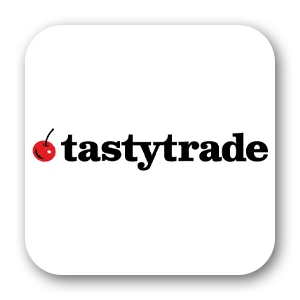Are you ready to transform your investments into a financial success story? I am sharing detailed information about the 10 best stocks for options trading. As we enter 2025, the stock market landscape becomes more complex, presenting challenges and opportunities for traders. To help investors, I did detailed research and analysis on the top 10 best stocks for options trading.
- Options and Options Trading: What Are They?
- Options
- Options Trading
- Top 10 Active Stocks for Options Trading
- What Are The Best Stocks to Trade Options On?
- 1. Apple (AAPL) – Consumer Electronics and Software Segment
- 2. Tesla (TSLA) – Electric Vehicles
- 3. SPDR S&P 500 ETF Trust – Tracks the S&P 500
- 4. Invesco QQQ Trust (QQQ) – Tracks Nasdaq-100
- 5. Nvidia (NVDA) – Semiconductors
- 6. Microsoft (MSFT) – Technology and Software
- 7. iShares Russell 2000 ETF (IWM) – Tracks the Russell 2000
- 8. Amazon.com (AMZN) – E-commerce and Retail
- 9. Netflix (NFLX) – Streaming Platform
- 10. Alphabet (GOOGL) – Communication Services
- Factors Determining a Good Stock for Options Trading
- 1. The 52-Week Range
- 2. Volume: The average volume should be around 50,000.
- 3. Price/Earnings Ratio: It should be between 1.0x and 10.0x.
- 4. EPS and CPS: It should be positive with positive growth.
- 5. Market Capitalization
- 6. Beta
- 7. Dividends
- 8. Open Interest in Options Chain
- 9. Insider Activity
- 10. News
- Understanding Different Option Strategies
- Bullish Strategy
- Bearish Options Strategies
- Neutral Options Strategies
- Tools and Resources for Options Traders
- Best Broker Platforms for Options Trading
- 1. tastytrade – Best options trading platform
- 2. E*TRADE – Best web-based platform
- 3. TD Ameritrade – Equity tools and research
- 4. Interactive Brokers – Best for professional options traders
- 5. Merrill Edge – Best for beginners
- Utilizing Stock Screeners
- Popular Analysis Tools and Indicators
- Staying Updated with Market News
- 1. Financial News Websites
- 2. Social Media Platforms
- 3. Stock Market Apps
- 4. Newsletters and Email Alerts
- 5. Financial Podcasts
- 6. Stock Market Forums
- Final Thoughts
- Frequently Asked Question
Investors have various choices in the stock market, and one option is Options Trading. Options trading is known for a quick profit or loss. These give the right to buy or sell stocks.
Traders use strategies like vertical spreads to lessen costs. Options can benefit from market ups and downs. But it’s not for beginners. Experienced investors use options to diversify their portfolios, manage risks, or seek big gains.
To choose the right stock for options trading, look at trading volume. Higher daily transactions mean more stock liquidity, making it a good choice. The best stocks for options trading vary for each investor.
In this article, we will discuss what options trading is, the best stocks to trade options, factors determining a good stock, different options strategies, tools and resources used, and the best broker platforms. Let’s start!
Options and Options Trading: What Are They?
Options
Options is a useful financial tool involving a buyer and a seller. The buyer pays a fee for specific rights outlined in the contract. There are two types of options: call options and put options.
- Call options enable the buyer to purchase an asset at a set price within a certain time.
- Put options allow the buyer to sell an asset at a fixed price within a specific period.
In call options, the buyer is optimistic about the asset’s value going up, while in put options, the buyer expects the value to decrease. On the other hand, sellers take the opposite stance. Call option sellers bet against a price rise, while put option sellers bet against a price fall. This balances the options market, accommodating bullish and bearish outlooks.
Options Trading
Options trading is a way for investors to bet where the stock market or individual assets like stocks or bonds might go. Options contracts provide a choice to buy or sell an asset at a specific price on or before a particular date. Choosing to trade options instead of regular stocks can be smart if you want to be actively involved in managing your investments and have flexibility in your strategies.
Being successful at options trading requires being good at making predictions and having strong nerves. When you buy an option, you have to make educated guesses about whether the stock’s price will go up or down, how much it will change, and when this change will happen.
In options trading, you can guess:
- Whether the price of an asset will go up or down from its current level.
- How much the price of an asset will change
- When these price changes will happen.
Top 10 Active Stocks for Options Trading
| Company Name | Stock Symbol | Average Options Volume | Sector |
|---|---|---|---|
| Apple | AAPL | 51.86M | Electronics and Software |
| Tesla | TSLA | 1.69 B | Electric Vehicles |
| SPDR S&P 500 ETF Trust | SPY | 1.5 B | Tracks the S&P 500 |
| Invesco QQQ Trust | QQQ | 844.86 M | Tracks Nasdaq-100 |
| Nvidia | NVDA | 1.16 B | Semiconductors |
| Microsoft | MSFT | 260.6 M | Technology and Software |
| iShares Russell 2000 ETF | IWM | 225.06 M | Tracks the Russell 2000 |
| Amazon.com | AMZN | 260.6 M | E-commerce and Retail |
| Netflix | NFLX | 163.87 M | Streaming Platform |
| Alphabet | GOOGL | 74.64 M | Communication Services |
What Are The Best Stocks to Trade Options On?
1. Apple (AAPL) – Consumer Electronics and Software Segment
Apple is the biggest company and is known worldwide. It has a market capitalization of 2.68 trillion USD. Apple scores high in liquidity and a thriving options market. Millions of shares are traded daily to ensure that finding a buyer or seller is never a hassle. Apple’s huge trading volume and its tendency for price fluctuations keep it on the options trading radar. The following are the benefits of trading with Apple stock:
Apple Stock Trading Benefits
- Long-term profits for long-term traders.
- Due to its big size and stability, it provides huge returns.
- Big Trading Volume
2. Tesla (TSLA) – Electric Vehicles
Tesla is a well-known company for vehicles owned by Elon Musk. It has a market capitalization of 784.06 billion USD. Tesla is known for riding the waves of unpredictability, which is a magnet for options traders. This is because Tesla’s stock tends to have significant ups and downs, partly due to its controversial leader, Elon Musk.
For options traders, this uncertainty is like a thrilling adventure. Tesla’s stock is influenced by Musk’s actions and the ever-changing electric vehicle market. It offers both instant rewards and heartbreaks. Tesla’s options market is bustling with activity. The stock can swing dramatically within a day, offering traders quick results, whether good or bad.
Tesla Stock Trading Benefits
- A most active market for trading.
- Advance trading options.
- Due to its volatile nature, it can be beneficial if you select the right move.
3. SPDR S&P 500 ETF Trust – Tracks the S&P 500
SPDR S&P 500 ETF Trust mirrors the S&P 500 index, representing the 500 biggest publicly traded companies in the U.S. It has a 385.84 billion USD market capitalization. It’s a significant player in the stock market and is highly popular. It’s a favorite among options traders because it enables them to speculate on the future of the entire stock market, not just individual companies.
The S&P 500 index is like a snapshot of the U.S. economy, indicating major companies’ performance. Options traders often use this index to predict specific company stocks in the broader market.
SPDR S&P 500 ETF Trust Benefits
- It represents the 500 biggest trading companies.
- Easy access to the performance of the overall U.S. stock market.
- It has high liquidity and is the most active market.
- Allow quick transactions.
4. Invesco QQQ Trust (QQQ) – Tracks Nasdaq-100
The Invesco QQQ Trust is an ETF that follows the Nasdaq-100, focusing mainly on non-financial tech stocks. It provides a balanced approach amid the tech industry’s volatility. It has a market capitalization of 385.84 billion USD. Since its launch in 1999, it has consistently offered high returns, making it appealing for options traders, especially due to its attractive calls and strike options. It has a recent price range of $250-$330 and an average options volume of 3.2 million. It’s a strong choice for options investors aiming for a well-performing and diverse portfolio.
Invesco QQQ Trust (QQQ) Benefits
- It tracks a wide range of non-financial tech stocks.
- It has high liquidity and trading volume.
- It is suitable for the growth potential of tech companies.
5. Nvidia (NVDA) – Semiconductors
Nvidia is a must-watch stock due to its gaming and artificial intelligence involvement. It has a market capitalization of 1.07 trillion USD. Nvidia is deeply involved in various tech areas, making its stock quite volatile, which presents opportunities for options strategies.
Nvidia’s options are liquid and have different strike prices and expiration dates. This stock experienced significant price swings recently due to trade tensions with China, but its 12-month price target suggests the potential for a substantial increase. Interestingly, many analysts recommend holding the stock, indicating expectations of more volatility on the horizon.
Nvidia (NVDA) Benefits
- It is stable and reliable due to its involvement in the gaming and tech sectors.
- It offers a wide range of strike prices.
- It allows easy buying and selling due to its liquid nature.
6. Microsoft (MSFT) – Technology and Software
Microsoft offers options trading for its high liquidity, catering to retail and institutional traders. It ensures smooth trading experiences with various expiration options. It has a market capitalization of 2.35 trillion USD.
The company’s focus is on cloud computing, particularly Azure. It significantly impacts its stock price, offering opportunities for substantial price swings based on news or earnings related to Azure.
This stock has shown remarkable growth, with a 156% increase this year. Analysts are increasingly optimistic about its future due to user growth by earning a “strong buy” label from Yahoo Finance. Investments in the Microsoft metaverse have yet to yield significant returns, and economic challenges have affected advertising revenues.
Microsoft (MSFT) Benefits
- Microsoft’s stronghold in cloud computing adds value to its stock.
- Its worldwide presence ensures continuous market interest and trading activity.
- It is stable and highly volatile.
7. iShares Russell 2000 ETF (IWM) – Tracks the Russell 2000
iShares Russell 2000 ETF tracks the Russell 2000 index, focusing on small-cap stocks. Those stocks are known for their high volatility, making them attractive for options traders seeking significant price movements. It has a market capitalization of 49.65 billion USD. iShares Russell 2000 tracks small-cap US equities, offering options traders a chance to capitalize on the extreme volatility typical of smaller companies, making it a popular choice.
The Small Cap 2000 has shown strong market performance with a price range of approximately $160-$202 in the last year. This ETF presents an appealing opportunity with the potential for significant returns in the future.
iShares Russell 2000 ETF (IWM) Benefits
- You can access all small U.S. companies.
- You can access up to 2,000 small-cap domestic stocks with a single fund.
- You can use it to diversify and grow your portfolio.
8. Amazon.com (AMZN) – E-commerce and Retail
Amazon is not as big as Apple but still massive, with a 1.31 trillion USD market cap. It ranks as the fourth-largest U.S. company and the fifth-largest globally. Its stock faced a significant drop in the half of the previous year. While it has recovered some ground, there are concerns among analysts that its current value might be too high considering its expected earnings growth.
Amazon.com (AMZN) Benefits
- It allows you to minimize risks.
- The availability of cheaper options increases opportunities for traders.
- Due to its online retail and e-commerce, it has a bright future in trading.
9. Netflix (NFLX) – Streaming Platform
Netflix is now a major streaming platform. It has a market capitalization of 167.33 billion USD. It’s good and attractive for options trading, especially during earnings seasons when subscriber growth influences stock prices significantly. The stock’s volatility during these times offers high-risk, high-reward opportunities for options traders, particularly due to Netflix’s intense focus on subscriber numbers.
The pandemic’s impact has been positive for streaming services like Netflix, with more people opting for online streaming over traditional theaters. It leads to increased valuations and opportunities for options plays.
Netflix (NFLX) Benefits
- It has high liquidity.
- It has a wide range of options trading strike prices.
- Its stock reacts strongly to market trends and your preferences.
10. Alphabet (GOOGL) – Communication Services
Alphabet is Google’s parent company, with a market capitalization of 1.65 trillion USD. It provides options traders with great liquidity and a dynamic business model, offering the volatility needed for strategic options trading. News related to its advertising about cloud computing and AI ventures creates active market movements, keeping traders engaged in Alphabet’s (GOOGL) stock.
Alphabet’s options market is extensive, as it offers a variety of expiration dates and strike prices. Its diverse business interests expose traders to different sectors, making it appealing for various trading strategies.
Alphabet (GOOGL) Benefits
- Its market offers a wide array of expiration dates and strike prices.
- Its strong financials instill confidence in options investors.
- Its global presence ensures continuous market interest and trading activity.
Factors Determining a Good Stock for Options Trading
Let’s discuss the top 10 important factors for determining a good stock for trading options.
1. The 52-Week Range
A stock near its 52-week low might seem like a good deal, but be cautious; it could still drop further. Stocks can move in any direction regardless of how low the price has fallen.
2. Volume: The average volume should be around 50,000.
Volume refers to the number of stocks traded in a day. It’s crucial that the average volume is above 50,000. Low volume means low liquidity. It makes buying and selling difficult due to fewer buyers and sellers.
3. Price/Earnings Ratio: It should be between 1.0x and 10.0x.
The price per share(P/E) ratio is important in stock evaluation. For example, if a stock is priced at $2 with earnings per share at $1, the PE ratio would be 2.0x.
4. EPS and CPS: It should be positive with positive growth.
EPS (Earnings Per Share) is calculated by dividing a company’s net income minus dividends on the preferred stock by the average number of shares outstanding. Positive earnings and consistent growth are important because missing analyst expectations can lower the stock price.
CPS (Cash Flow Per Share) is gaining popularity because it’s harder to manipulate than EPS. CPS reveals the actual cash a company possesses. It indicates its financial health and operational efficiency. This statistic is vital for assessing a company’s ability to pay debts and invest in future projects. Also, it contributes to potential stock price growth.
5. Market Capitalization
Large and mega-caps are worth billions. It offers stability, and micro and small caps may be worth millions, posing more risk. You should consider the market cap to align with your risk tolerance. Smaller companies offer growth but more risk, while larger ones provide stability but slower growth.
6. Beta
A stock with a beta of 1.0 moves with the market. If the market rises by 1%, the stock does the same. A beta of 2.0 means if the market increases by 3%, the stock rises 6%, but it also falls double when it drops. A negative beta means the stock moves opposite the market.
7. Dividends
Dividends are cash payments made by companies to shareholders. Before investing, if a company pays dividends, then it indicates financial health.
8. Open Interest in Options Chain
Many stocks offer options contracts for future buying and selling. You’ll find an options chain link on financial websites when researching a stock. It shows available options: calls (to buy) on the left and puts (to sell) on the right, with strike prices in the middle. These prices indicate the expected stock movement range.
9. Insider Activity
Pay attention to the company’s internal activities. If company insiders buy more shares, it’s often a good time to consider buying, as they believe in the company’s future.
10. News
If your stock makes front-page news, be ready for significant gains or trouble ahead. News shapes public expectations, influencing stock prices.
Understanding Different Option Strategies
There are three option trading strategies: bullish, bearish, and neutral. Let’s discuss these with further types of each.
Bullish Strategy
1. Bull Call Spread
A bullish options strategy is where an investor buys a lower strike call option and simultaneously sells a higher strike call option, aiming for profit if the underlying asset’s price rises moderately.
2. Bull Put Spread
A bullish strategy involves selling a put option with a higher strike price and buying a put option with a lower strike price, aiming for profit if the underlying asset’s price stays above the higher strike price.
3. Call Ratio Back Spread
A complex strategy involves selling a call option and using the proceeds to buy multiple call options, typically at a higher strike price, providing unlimited profit potential if the underlying asset’s price significantly rises.
4. Synthetic Call
A strategy combining a long stock position with a long put option, mimicking the payoff of a call option, allowing investors to profit from the stock’s potential rise while limiting losses in case of a decline.
Bearish Options Strategies
1. Bear Call Spread
A bearish options strategy is where an investor sells a call option and buys another call option with a higher strike price, aiming to profit if the underlying asset’s price decreases or remains below the lower strike price.
2. Bear Put Spread
A bearish strategy involves buying a put option with a higher strike price and selling a put option with a lower strike price, enabling investors to profit if the underlying asset’s price falls below the lower strike price.
3. Synthetic Put
A strategy combining a short stock position with a long call option, replicating the payoff of a put option, allowing investors to profit from the stock’s potential decline while limiting losses if the stock price rises.
4. Strip
An advanced bearish strategy where an investor buys two put options and sells one call option, expecting a significant price decrease in the underlying asset to achieve maximum profit.
Neutral Options Strategies
1. Long & Short Straddles
- Long Straddles
An options strategy where an investor simultaneously buys a call option and a put option at the same strike price, anticipating significant price movement in the underlying asset, aiming for profit from the volatility.
- Short Straddles
An options strategy where an investor sells a call option and a put option with the same strike price, betting on low price volatility, aiming to profit from the stable market conditions.
2. Long & Short Butterfly
- Long Butterfly
A neutral options strategy involves buying one lower strike call, selling two middle strike calls, and buying one higher strike call, anticipating moderate price movement and aiming for profit if the underlying asset’s price stays within a specific range.
- Short Butterfly
A neutral strategy is where an investor sells one lower strike call, buys two middle strike calls, and sells one higher strike call, expecting minimal price movement and aiming to profit if the underlying asset’s price stays within a specific range.
3. Long & Short Strangles
- Long Strangles
An options strategy where an investor buys an out-of-the-money call option and an out-of-the-money put option, anticipating significant price movement and aiming for profit if the underlying asset’s price moves dramatically in either direction.
- Short Strangles
An options strategy where an investor sells an out-of-the-money call option and an out-of-the-money put option, expecting low price volatility and aiming to profit if the underlying asset’s price remains within a specific range.
Tools and Resources for Options Traders
The following are the important tools and resources for option traders:
- Sample Iron Condor Trading Plan
- Strategy Workbook
- Payoff Calculator
- Profit Tracking Workbook
- Strategies Quick Guide
- Strategies Poster
- Trade Evaluation Worksheet
- Trading Journal
- Candlestick Patterns
Best Broker Platforms for Options Trading
1. tastytrade – Best options trading platform
tastytrade is the top choice for options trading. It’s a dream platform for options traders with its lightning-fast speed and efficient workflow.
2. E*TRADE – Best web-based platform
E*TRADE provides all the tools options traders need, beautifully displayed for easy use.
3. TD Ameritrade – Equity tools and research
TD Ameritrade’s platform offers everything you need for successful options trading, with extensive customization, powerful tools, and excellent educational resources.
4. Interactive Brokers – Best for professional options traders
Interactive Brokers stand out as the best options platform with exceptional margin rates. While their Trader Workstation is powerful, it can be challenging to learn compared to other brokers.
5. Merrill Edge – Best for beginners
Merrill Edge is a top choice for beginners. It’s easy to use for options trading. Merrill’s unique Story formats make stocks and ETFs accessible and understandable.
Utilizing Stock Screeners
Utilizing a stock screener is effective for option trading.
- A screener filters through numerous stocks and their options, aligning with your trading strategies.
- It helps you focus on specific options contracts. It allows for a deeper understanding of their dynamics.
- Understanding stock price behaviors enhances the likelihood of making intelligent options trades.
Popular Analysis Tools and Indicators
Below are the most popular technical analysis tools and indicators used in options trading:
- On-Balance-Volume (OBV): It measures volume flow in a security over time, indicating positive and negative trends.
- Average Directional Index (ADX): It analyzes money flow in and out of a security.
- Accumulation/Distribution Line (A/D Line): It analyzes trend strength and momentum by evaluating volume and price changes.
- Aroon: It is used to predict potential trends, helping traders anticipate shifts in market direction.
- Moving Average Convergence Divergence (MACD): It displays the relationship between two moving price trends.
- Relative Strength Index (RSI): It measures current price changes to assess whether a stock is overvalued or undervalued.
- Stochastic Oscillator: It compares a security’s closing prices over a specific period to predict potential reversals.
- Fibonacci Retracement: It uses horizontal lines to identify support and resistance areas based on key Fibonacci levels.
- Parabolic SAR: It determines the price direction of security in making informed decisions.
Staying Updated with Market News
You should stay updated by reading trading market news on the following platforms:
1. Financial News Websites
Websites such as Bloomberg, Forbes, and the Wall Street Journal offer timely news and analysis on the stock market and economy.
2. Social Media Platforms
Platforms like Twitter, LinkedIn, and Facebook provide real-time market trends and connect traders and investors.
3. Stock Market Apps
Numerous iOS and Android apps such as TradingView, TrendSpider, and Firstrade offer real-time news, quotes, and charts for informed decision-making.
Read more: Best Stock Trading Technical Analysis Tools to Use
4. Newsletters and Email Alerts
Many financial institutions and news outlets offer email newsletters and alerts, directly delivering market news and analysis to your inbox.
5. Financial Podcasts
Podcasts like the Wall Street Journal’s “The Journal” and “MoneyTalk” provide market insights in an easily accessible audio format.
6. Stock Market Forums
Online forums like Reddit’s WallStreetBets or StockTwits allow traders and investors to discuss market trends and news, fostering a sense of community and knowledge sharing.
Final Thoughts
I’ve mentioned everything you need to know before starting options trading. I recommend options trading because of its increased cost efficiency, fewer risks, and potential to generate a high profit. Before starting, I will give you some successful trading tips, you should have complete knowledge about trading, managing risks, being patient, and being good at understanding numbers.
*General Advisory Disclaimer:
This article provides advice that does not factor in your specific objectives, financial circumstances, or requirements. Prior to taking any action based on this information, it is important to assess the suitability of the provided information in relation to the characteristics of the relevant financial product, taking into consideration of your individual objectives, financial situation, goals and needs.












